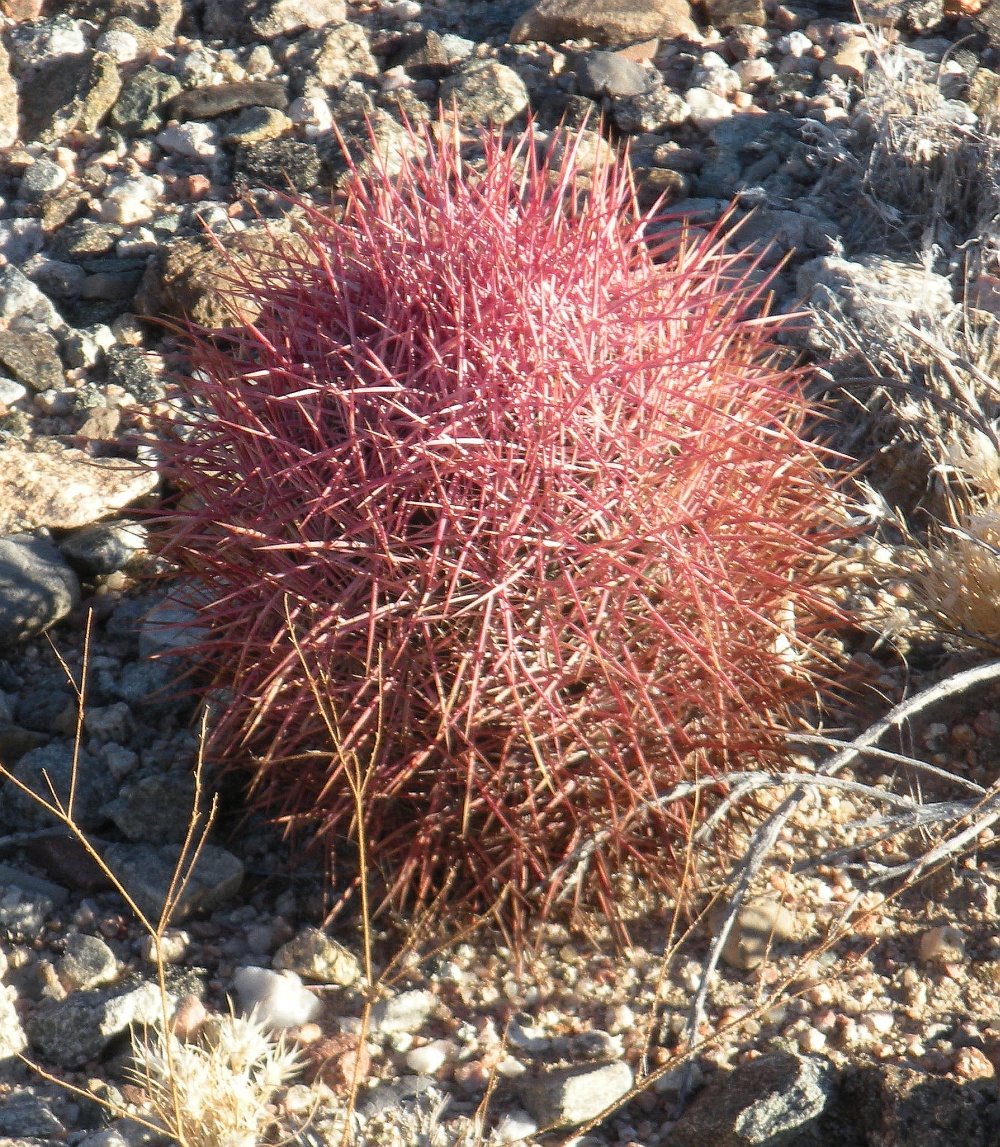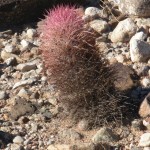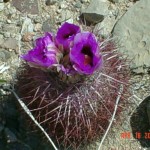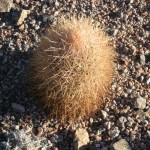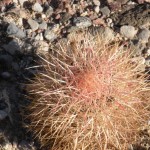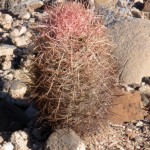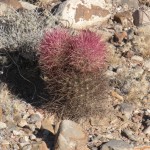(Photograph: Sclerocactus johnsonii, Nancy Hussey)
Introduction
Sclerocactus johnsonii has been a member of various genera: Echinocactus, Echinomastus, Ferocactus, Neolloyeia, Thelocactus, and even Pediocactus. It seems to be in the right genus now. Local populations dot the Mojave desert, but it is absent in large portions of the desert. S. johnsonii typically grows on the rockiest soils, its densely, spiny egg-shaped form often seeming to grow right out of rock or gravel.
The Details
Wikipedia reports:
Echinomastus johnsonii (syn. Sclerocactus johnsonii) is a species of cactus known by the common names Johnson’s beehive cactus and Johnson’s fishhook cactus. It is native to the southwestern United States from eastern California to Utah [and Arizona], where it can be found in desert scrub habitat. It produces an egg-shaped or cylindrical stem up to 25-centimeters tall by 10 wide. It is covered densely in straight and curving spines, which may be up to 4 centimeters long and come in shades of yellow, gray, lavender, and pink or red. An areol may have up to 24 spines. The cactus has yellow or hot-pink flowers; the species is sometimes divided into two varieties on the basis of color. Flowers are up to 8-centimeters wide. The scaly, fleshy fruit is up to 1.8 centimeters long.
The flowers are beautiful, being as brilliant as those Opuntia basilaris or Echinnocereus engelmannii. Sometimes the plants are not even noticed until they bloom because they blend into the background so well. Ants love the seeds, and seed collection is a race with the ants beginning about May 1 in northern Arizona.
